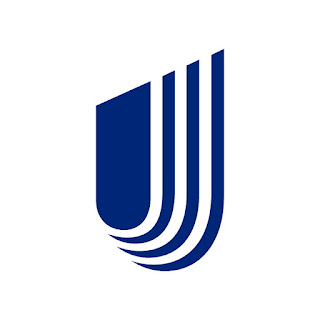Marram Health Center | Partners | NWI.Life


Study Found Vaccine Campaign Saved $90 for Every $1 Spent
May 7, 2024 - The U.S. Department of Health and Human Services' (HHS) COVID-19 Vaccination Public Education Campaign, We Can Do This, resulted in an estimated$731.9 billion in societal benefits due to averted illness and related costs, resulting in a nearly $90 return in societal benefits for every $1 spent, according to research published on Monday in the American Journal of Preventive Medicine .
"At the height of the pandemic, we launched one of the largest public health education campaigns in U.S. History to encourage and educate Americans on the steps they could take to get and stay healthy. We now have research to confirm the COVID-19 Public Education Campaign, We Can Do This, was an indispensable part of efforts to vaccinate people and protect them from COVID-19, saving thousands of lives and billions of dollars in the process," said HHS Secretary Xavier Becerra. "HHS is responsible for protecting the health and well-being of all Americans. As stewards of the public's money, we wanted to deliver impact for the American people in the most efficient and effective ways. This confirms we did exactly that. We will no doubt use what we learned in this campaign to further improve our public health efforts in the future."
The study showed the Campaign encouraged 22.3 million people to complete their primary COVID-19 vaccination series between April 2021 and March 2022, preventing nearly 2.6 million SARS-CoV-2 infections, the virus that causes COVID-19, including nearly 244,000 hospitalizations, during the time period that the highly contagious Delta and Omicron virus variants were spreading.
Preventing these outcomes resulted in societal benefits to the U.S. Of $740.2 billion, accounting for such factors as medical expenses, wages, and other costs that people and institutions would have incurred in the absence of the Campaign. In comparison, the Campaign cost $377 million, with an additional $7.9 billion spent to vaccinate 22.3 million people in that time period.
According to the study, from April 2021 to March 2022, the net benefit of the Campaign—how much money these efforts saved minus how much they cost—came to $731.9 billion, translating to a return on investment of $89.54 for every $1 spent.
In April 2021, HHS launched the We Can Do This Public Education Campaign to increase COVID-19 vaccine confidence and uptake in the U.S. The Campaign, one of the largest public health education efforts in U.S. History, promoted COVID-19 vaccine uptake using integrated, multichannel, research-based strategies. It aimed to reach 90% of adults in the United States at least once per quarter, with even more intense outreach to high-risk communities. The Campaign featured more than 7,000 ads in 14 languages, with many culturally tailored and geographically targeted to specific minority, racial, and ethnic audiences. A multimedia approach bolstered widespread engagement with trusted messengers, partner organizations, and influencers who delivered persuasive, accurate, and culturally relevant information to vaccine-hesitant populations.
The benefit-cost study of We Can Do This is the only research study to date that looked at the contributions of a media campaign to encourage people to get COVID-19 vaccines during the pandemic emergency period. The newly published study is unique in that it demonstrates that the nationwide media Campaign was an indispensable component of the nation's efforts to vaccinate people and protect them from COVID-19. It also adds to the body of evidence that shows the Campaign's impact on behavior change.
"This research confirms the benefits of public health campaigns as part of a multi-layered response to a public health crisis and to the effort to provide accurate information to the American public," said May Malik, Senior Advisor for Public Education Campaigns at HHS.
To evaluate the benefits and costs of the national Campaign, researchers used real-world data from multiple sources, such as data on COVID-19 outcomes, uptake of COVID-19 vaccines, and vaccine effectiveness, from the U.S. Centers for Disease Control and Prevention (CDC), along with survey data collected to measure the Campaign's effects on vaccination behaviors over time.
The findings can help inform the Federal response to future public health threats. As part of a multipronged approach to addressing public health crises, this study demonstrates the return on investment possible from public education campaigns given their effectiveness in building vaccine confidence and supporting healthy behavior change.
The study, Benefit-Cost Analysis of the HHS COVID-19 Campaign: April 2021–March 2022, was conducted by researchers from HHS Office of the Assistant Secretary for Public Affairs and Fors Marsh in Arlington, Virginia.Source: HHS
The American Journal of Preventive Medicine is the official journal of the American College of Preventive Medicine and the Association for Prevention Teaching and Research. It publishes articles in the areas of prevention research, teaching, practice and policy. Original research is published on interventions aimed at the prevention of chronic and acute disease and the promotion of individual and community health. Of particular emphasis are papers that address the primary and secondary prevention of important clinical, behavioral and public health issues such as injury and violence, infectious disease, women's health, smoking, sedentary behaviors and physical activity, nutrition, diabetes, obesity, and alcohol and drug abuse. Papers also address educational initiatives aimed at improving the ability of health professionals to provide effective clinical prevention and public health services. Papers on health services research pertinent to prevention and public health are also published. The journal also publishes official policy statements from the two co-sponsoring organizations, review articles, media reviews, and editorials.
Publisher Elsevier Website http://www.Ajpmonline.Org/ Impact factor 4.110 (2010)Some content from Wikipedia, licensed under CC BY-SA
Dr. Mirza Rahman, President of the American College of Preventive Medicine (ACPM) joins the podcast to share insights into his background & ACPM, the lack of funding for residency training, advice for emerging leaders looking to have an impactful and fulfilling medical career, and more.
Comments
Post a Comment